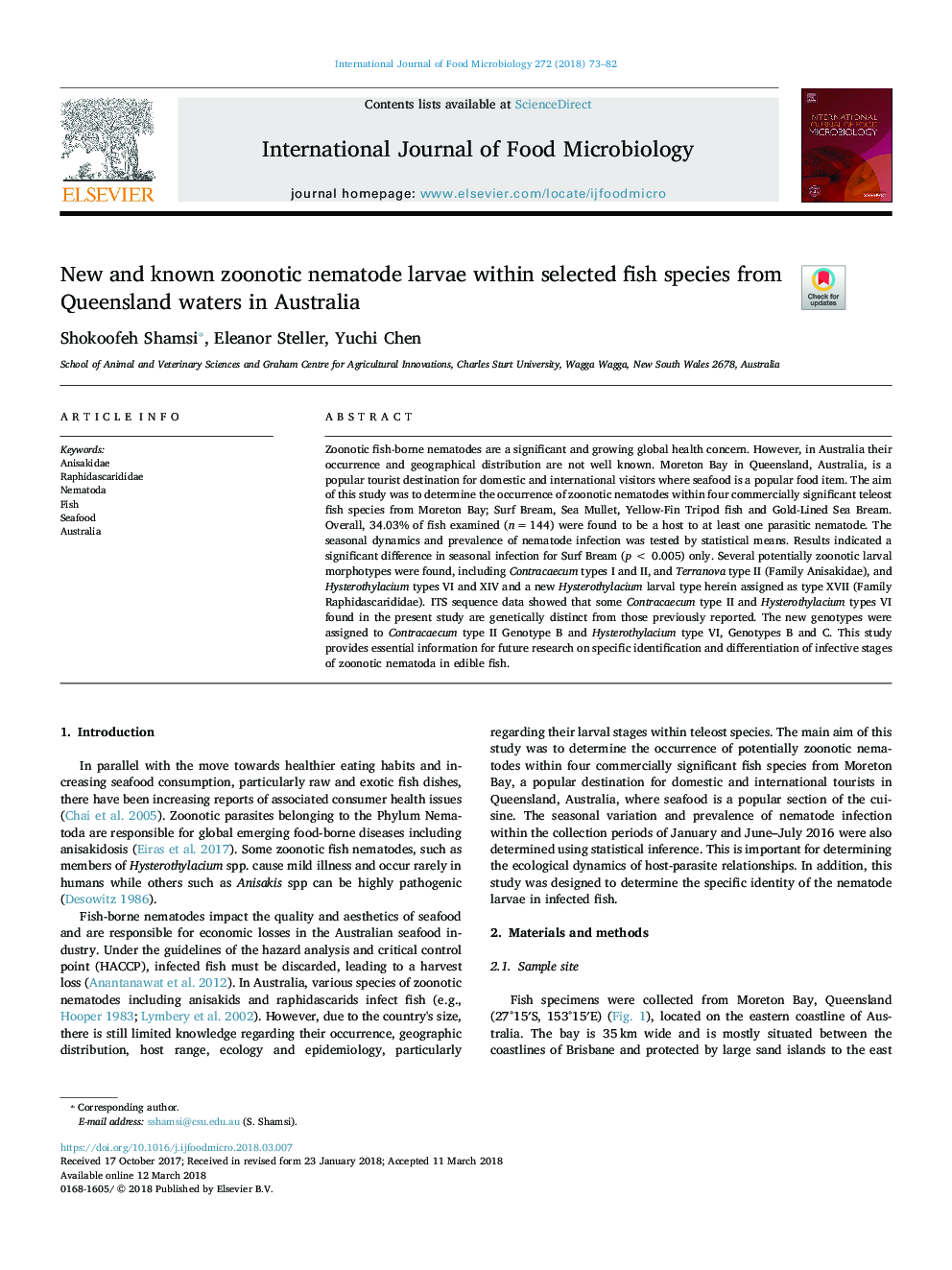| Article ID | Journal | Published Year | Pages | File Type |
|---|---|---|---|---|
| 8844233 | International Journal of Food Microbiology | 2018 | 10 Pages |
Abstract
Zoonotic fish-borne nematodes are a significant and growing global health concern. However, in Australia their occurrence and geographical distribution are not well known. Moreton Bay in Queensland, Australia, is a popular tourist destination for domestic and international visitors where seafood is a popular food item. The aim of this study was to determine the occurrence of zoonotic nematodes within four commercially significant teleost fish species from Moreton Bay; Surf Bream, Sea Mullet, Yellow-Fin Tripod fish and Gold-Lined Sea Bream. Overall, 34.03% of fish examined (nâ¯=â¯144) were found to be a host to at least one parasitic nematode. The seasonal dynamics and prevalence of nematode infection was tested by statistical means. Results indicated a significant difference in seasonal infection for Surf Bream (pâ¯<â¯0.005) only. Several potentially zoonotic larval morphotypes were found, including Contracaecum types I and II, and Terranova type II (Family Anisakidae), and Hysterothylacium types VI and XIV and a new Hysterothylacium larval type herein assigned as type XVII (Family Raphidascarididae). ITS sequence data showed that some Contracaecum type II and Hysterothylacium types VI found in the present study are genetically distinct from those previously reported. The new genotypes were assigned to Contracaecum type II Genotype B and Hysterothylacium type VI, Genotypes B and C. This study provides essential information for future research on specific identification and differentiation of infective stages of zoonotic nematoda in edible fish.
Related Topics
Life Sciences
Agricultural and Biological Sciences
Food Science
Authors
Shokoofeh Shamsi, Eleanor Steller, Yuchi Chen,
